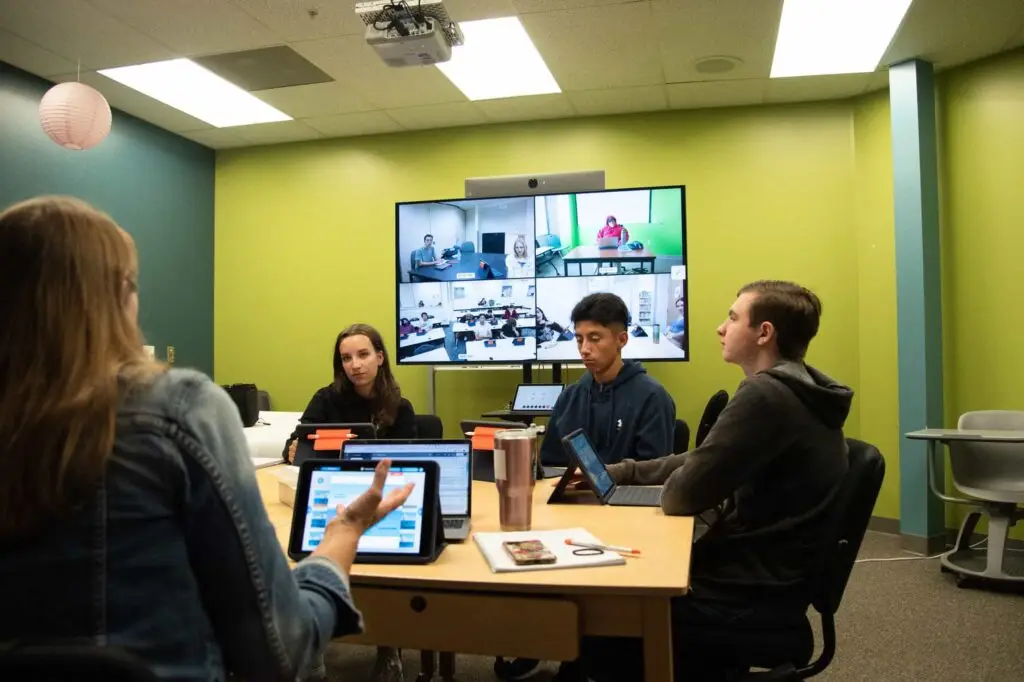Amid the chaos and multiple hardships of the COVID-19 pandemic, educators in the St. Vrain Valley School District vowed to extract long-term lessons from the crisis. We have been rethinking student time, instructional delivery systems, and teacher roles. While the pandemic presented myriad difficulties, it also shed light on the undeniable benefits of technology in education. Questions arose: Why should students and teachers be confined to traditional classrooms? Why should physical location limit access to coursework?
In 2022, we began the AGILE initiative (Advanced Global Interactive Learning Environments). Students here and anywhere in Colorado can now take courses online from any high school in Colorado, taught synchronously by highly effective teachers.
AGILE’s impact is multifaceted:
- Expanded course offerings: AGILE opens doors to many courses previously unavailable due to low enrollment at individual schools. Now, subjects like advanced languages, math, art, and computer science can reach more students, bridging gaps and nurturing interests.
- Professional development: Teachers engage in more robust professional development, co-teaching remotely with seasoned educators. This collaborative approach enhances teaching practices and fosters a culture of continuous improvement.
- Accessibility: Physical barriers dissolve, as students can access coursework regardless of location. Education becomes equitable and inclusive in bustling urban centers or remote rural areas.
AGILE uses three fundamental approaches:
- Fully remote instruction: Students from various schools attend classes online, facilitated by teachers in AGILE classrooms. This synchronous learning model fosters maximum engagement and interaction.
- Hybrid instruction: AGILE accommodates in-person and remote students, fostering a dynamic learning environment. Para-educators provide support, ensuring seamless integration.
- Paired instruction: In this model, experienced educators mentor novice teachers through co-teaching arrangements, enriching the learning experience for all involved.
Paradigm shift, statewide reach
AGILE isn’t confined to our district alone. It extends to rural communities through a strategic partnership facilitated by the Colorado Association of School Executives. By offering AGILE courses at no cost to rural students, we are addressing the disparity in educational opportunities, transcending geographical boundaries. To date, we are serving more than 570 local students and 12 students statewide. We expect external enrollment to grow to 100. This student-centered, personalized learning vision lets every learner craft their own educational journey and promotes excellence, equity, and innovation.
Implementing AGILE poses challenges and opportunities, particularly ensuring all schools align their schedules. Because development and implementation were led by our central offices of curriculum, instruction, and technology services, many potential barriers to implementation were addressed before piloting began. Because school-level implementation barriers were the most important elements to troubleshoot, the program was co-developed with principals.
The early returns are promising. “One of the biggest bonuses of technology is how it can make the world more accessible,” says Laurel Beeken, French teacher at Skyline High School. This year, Beeken teaches a combined AP French 4 course to five students in person at Skyline High and 20 additional students from St. Vrain’s Erie High, Niwot High, and Silver Creek High virtually. Online learning allows students to further customize their education. Rural students are also enthusiastic. One student, currently the only sophomore in her school, appreciates being able to interact with other students. Another 10th grader told us, “St. Vrain has helped me learn not only a new language but also a new way to learn. Without this opportunity, I wouldn’t have been able to take a foreign language course.”
The pandemic took a toll on all of us. But it also gave us the instructional tools—remote learning—to advance excellence, equity, and innovation at scale. It’s up to us to take advantage of this opportunity.




